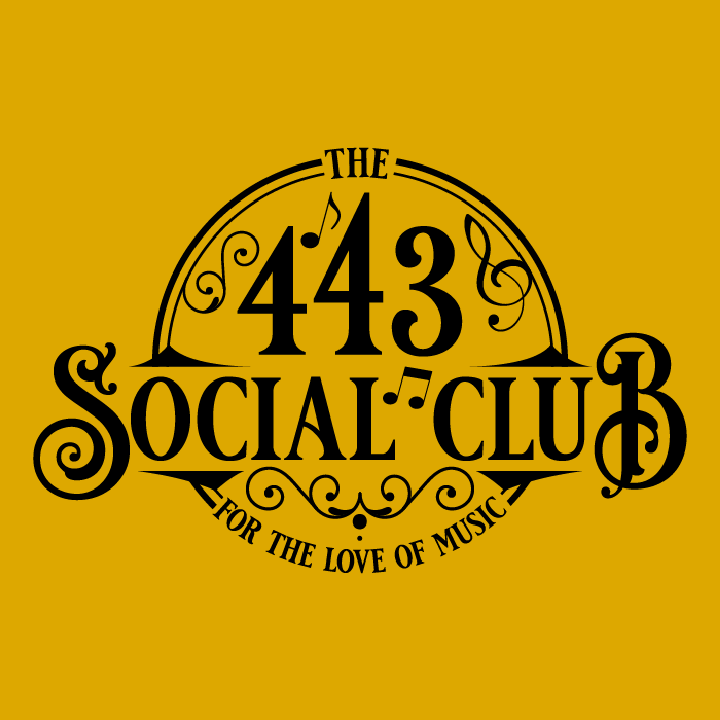
I finally got our 2024 Recap post up this week… better late than never, right? If you missed it, you can find it HERE.
2024 was a year with a lot of changes and a lot of hard lessons learned.
Up until now, the survival of the 443 has depended on everything going right: booking the right bands, booking the right number of shows, and selling all those shows out. All the ticket holders actually showing up, and all the attendees hitting our normal check average. And that’s on top of the usual small business issues: controlling labor, reducing waste, etc. Our margin for error is razor-thin.
As you can imagine, that’s not realistic… things aren’t going to work out in our favor every time.
But, the biggest issue we’re grappling with right now is an obsolete business model.
We sell out a lot of our shows, and it looks like everything is going great to the outside observer. Most people don’t realize that we keep little, if any, of the revenue from ticket sales.
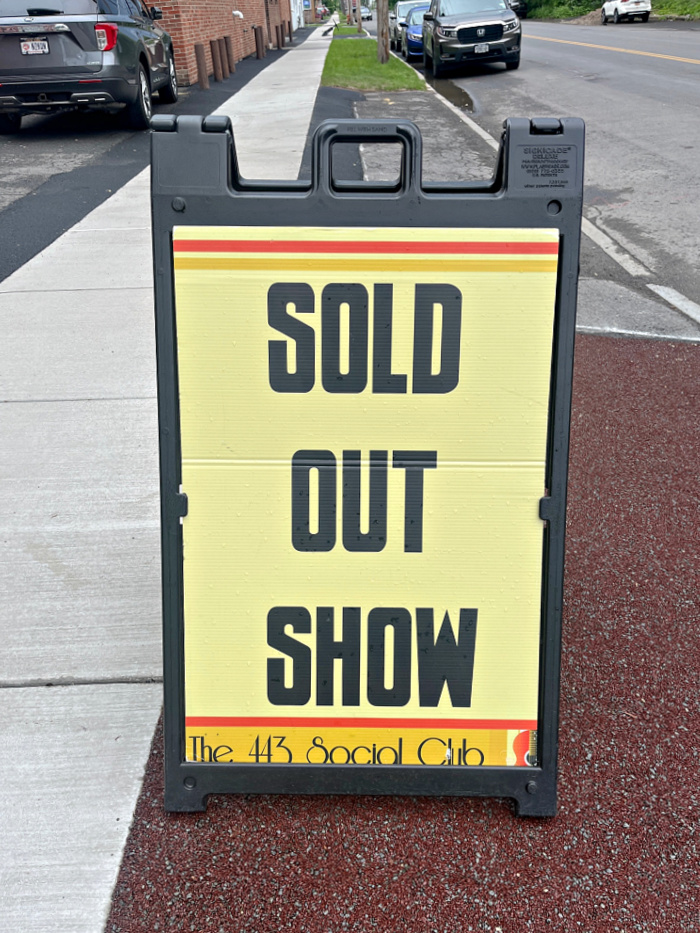
Here is the inside scoop:
Our typical arrangement is a guarantee (payment the artist gets no matter what – even if only 10 people buy tickets) vs a 75/25 ticket split, whichever is greater. A typical offer for us would be a $1000 guarantee vs the ticket split, with our average tickets being $25-$35 per seat. We have 75 seats.
Gross sales for a sold-out show with those ticket prices would be $2325. The touring artist would get $1743.75, and we would get $581.25.
$250-$300 goes to pay our in-house sound tech plus the paid ads we run on social media to sell tickets, so the maximum we’re keeping is (at best) around $300. If the show is not sold out, that number is lower.
For local shows, the arrangement is usually a straight guarantee. Ticket prices are usually $10 or $15, and most, if not all, of that goes to cover the band guarantee. The best possible scenario is to get about $100 out of ticket sales to pay for part of the sound tech fee.
We are operating at a deficit if the show does not sell enough tickets to cover the artist’s guarantee.
Even without seeing our operating budget, it’s easy to understand that $300 or less per night doesn’t come close to covering the long list of expenses required to keep the doors open: rent, utilities, and insurance. Payroll, linen, trash, pest control, draft cleaning services, plus a long list of expensive licenses and permits.
Amazingly, people still give us a hard time about our $15 per person minimum purchase requirement. 🙁
Music venues’ main revenue source is food and drink sales, and we’re seeing a seismic shift in consumer habits in this area. As I mentioned in my 2024 Recap post, we’re in the midst of a massive change in the culture around alcohol consumption.
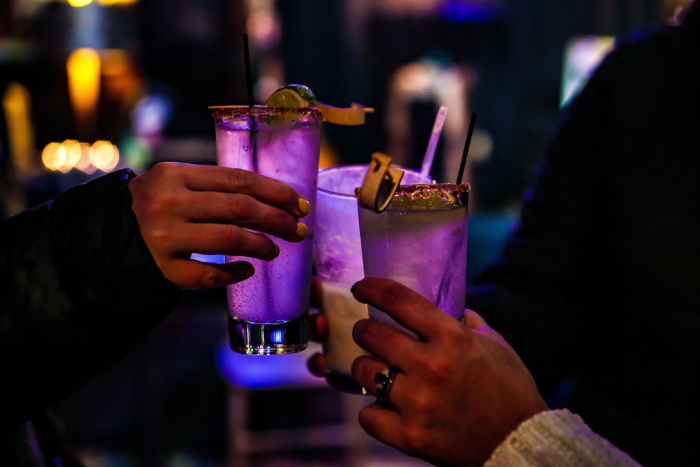
PHOTO CREDIT: MIKE SWEETMAN
Some of it is a correction from over-indulging during the COVID shutdown; some of it is because of the legalization of weed – folks are turning to edibles or smoking instead of having a cocktail after work. A lot of it is because more people are realizing how bad excessive alcohol consumption is for your body and mental health.
If you think about it, it’s kind of NUTS that the survival of our business depends on selling something to our customers that isn’t all that great for them.
This movement towards sober, sober-ish, and California sober living has been going on for several years, but we really started to see the impact on our sales in 2024.
The skyrocketing cost of groceries and housing has not helped either. When corporate monopolies are allowed to make groceries obscenely expensive, it doesn’t leave much expendable income for things that exist only to bring you joy, like a night out listening to live music.
We ended 2023 on a high note – selling out almost all of our shows and showing a small profit for the first time in our five-year existence. I was even able to pay myself a modest salary for a while, also a first.
My game plan for 2024 was to add some additional revenue streams to build on our already strong sales: 443 merch – T-shirts, hats, hoodies, etc.- plus ticketed live streaming of our sold-out shows. Our membership program has always been critical to our survival, so I planned to expand it and add a corporate sponsorship program. Everything looked promising going into the year.
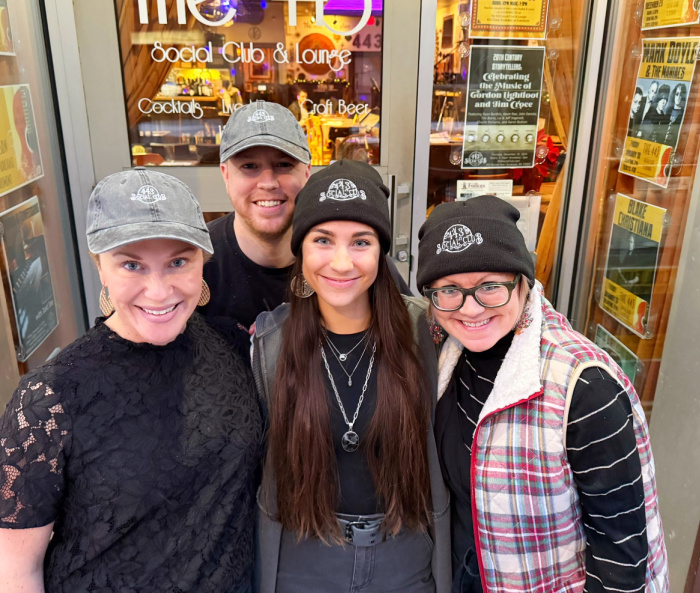
I made some mistakes with our calendar in 2024, trying to book too many shows. By spring, I had the calendar back under control, but the change in drinking habits began to affect our sales in a big way. We’re back to selling out shows regularly again, but our sales are 25-30% less than they were a year ago – and that’s with steady increases in drink prices due to increased cost of goods.
The trend towards consumers drinking less (or not at all) is only going to increase, which begs the question –
How do music venues adapt and keep their doors open?
I follow a lot of other independent music venues on social media because I’m interested in how they deal with business challenges; plus, I get inspired seeing how other rooms promote shows and sell tickets. I knew a few of them were not for profit, like the legendary CAFFE LENA in Saratoga, but I stumbled on this article in Rolling Stone magazine and realized there are a lot more than I thought going the non-profit route:
Independent Venues Have Found New Ways to Survive – They Hope
I started researching the idea of turning 443 into a not-for-profit in the fall, but I wasn’t sure if it was the right move for us. Plus, it seemed like a massive task to take on when I was already overwhelmed trying to keep the day-to-day stuff running at the club.
Coincidentally, I was chatting with one of our customers at a show one night and she randomly suggested that we look into becoming a Nonprofit,
Mary Anne and I both served on the board of directors for Vera House about 20 years ago, so we’ve been friendly acquaintances for a while. I knew she was an attorney, but I didn’t realize she specialized in consulting for Nonprofit organizations. I took it as a sign that I should start thinking more seriously about the idea.
We set up a meeting at her office during our holiday break. She explained the ins and outs and gave me some homework – figuring out our mission statement, researching possible funding sources, and coming up with a name for the Nonprofit entity.
So… IT’S HAPPENING!
Working on this project was put on pause in January—I ended up in the hospital unexpectedly, and I have not been able to work at the club for more than a few hours a day. But I’m hoping to be back in the game in February, and making this giant leap forward is my top priority for 2025.
In all honesty – this is the only path I see to keeping the doors open at the 443.
Here’s what it will look like:
- Once we file the paperwork to become a Nonprofit, we’ll begin writing grants to obtain funding. This process takes time, and the Nonprofit will not have any revenue right away.
- We’ll start creating educational programming similar to some of the things we tried in our first year of business. For example, if we host an award-winning blues harp player on our stage on Friday, we might offer a blues harmonica workshop on Saturday afternoon while the artist is still in town. Funding from grants would make this financially viable.
- Our donations and corporate sponsorships will move to the Nonprofit side of the business and become tax deductible.
- The Nonprofit will sign a “shared services agreement” with the 443, which means it will be responsible for a certain percentage of the rent, utilities, and eventually payroll for employees working on the Nonprofit side.
- I will have to hire a part-time bookkeeper. It’s critical that we keep meticulous financial records, and we’ll have an annual audit.
- I will need to put a board of directors together.
- The Nonprofit will operate alongside the existing 443 Social Club for the time being. Once the Nonprofit has secured funding, we can decide whether to fold the 443 into the Nonprofit or keep them running as separate entities.
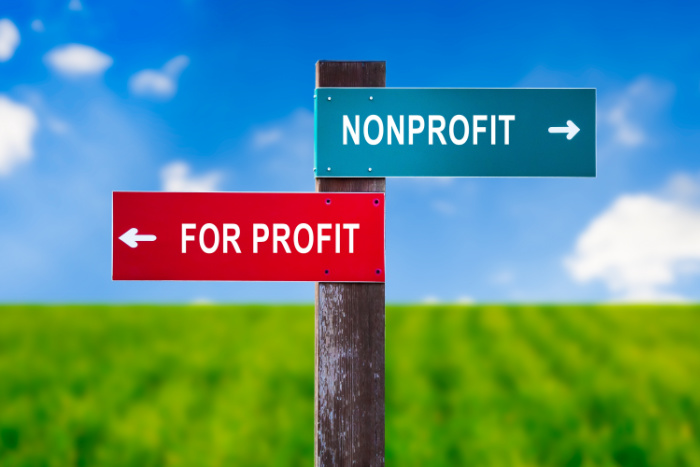
Another big advantage of making the 443 a Non-profit venue is that it will allow the club to exist beyond the time I’m running it. We have built an extraordinary community and brought award-winning artists to Syracuse who would otherwise have driven right past us on I-90.
What we’ve created is truly special… and this way, the magic can continue as long as the community wants to support it.

